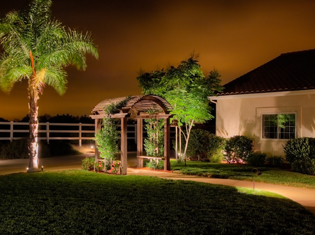EXPANDING NIGHTTIME LIVING SPACE
When it comes to lighting outdoor spaces, most tend to think of simply illuminating the exterior of a structure or property. One of the most underestimated aspects of landscape lighting is that it can actually extend living space physically as well as visually. However, before one takes up the decision of lighting up their house, it’s advisable to carry out a technical survey.
When light is brought to a dark back or front yard, it visually pushes the boundaries of a house. The more elements that are lit, the more people will push the edges of where a person will tend to gravitate to beyond the interior of a house.
Pushing this boundary creates a visually striking look for the outside of the house, especially when the interior lights are turned off. You can also add Spiral Piers and put lighting on it for your outdoors to look even better.
BOUNDARY LIGHTING
Another practice for expanding nighttime living space is boundary lighting. Many people have a fence or shrub line that represents the end of their property line. This section can be illuminated with wall wash fixtures and lighting that can be overlapped to create a continuous wall of light that will subtly show the edges of a yard. You can use bollard lights for they are one of the most attractive lighting options available to homes for landscape lighting.
PLAN FOR THE OUTSIDE AS WELL AS THE INSIDE
In the process of designing a new residential or commercial lighting plan, remember to include what will happen on the inside of the house or building, especially in the main areas that look outward.
If the living or dining room is in the back of the house, shifting the balance of the entire lighting plan to better represent the most trafficked area may be a desire of the homeowner.
Opposite to this, if the bedroom is in a particular area that has a lot of windows, the design may require extra care not to put too much light into that area.
Discussing the specific needs and desires during the planning phase with the client will give great direction to the specific topic of indoor viewing. Ask about safety, utility, and what areas, plants or even stones are the favorite of the client. You can also add a retaining wall to make landscape lighting more attractive.

